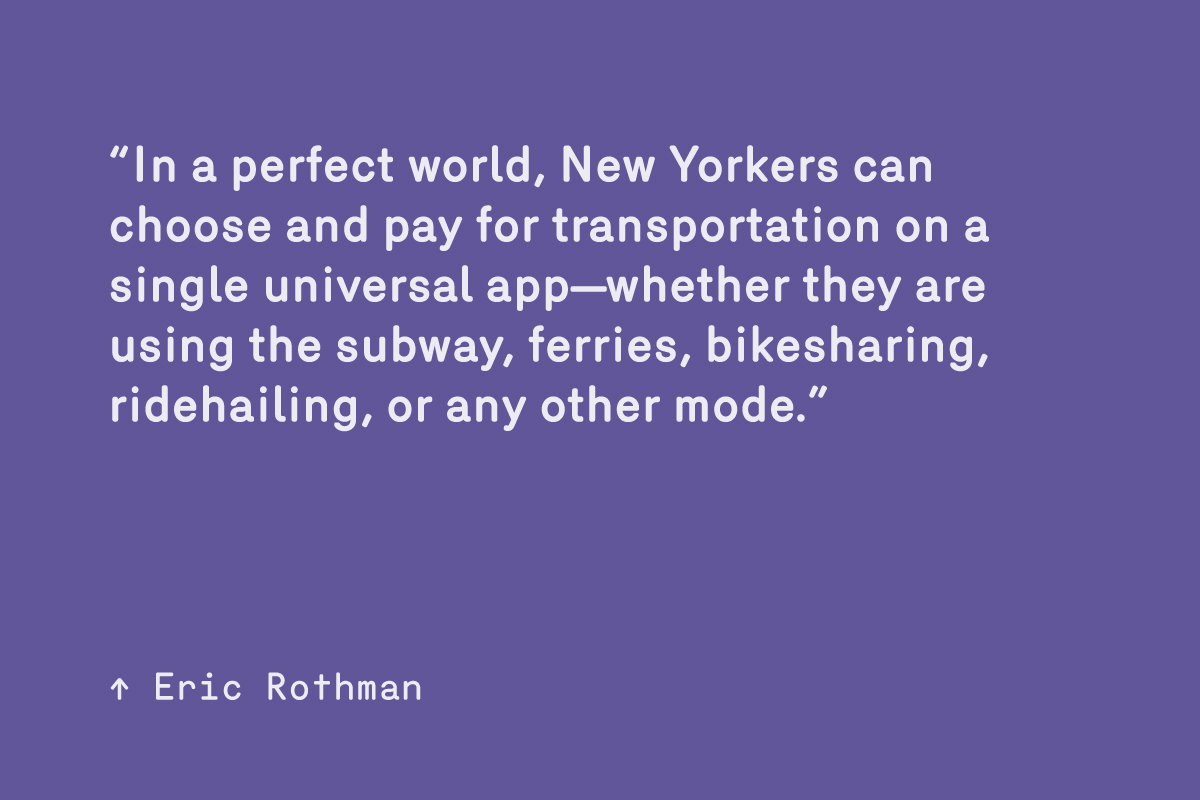
In a perfect world, New Yorkers can choose and pay for transportation on a single universal app—whether they are using the subway, ferries, bikesharing, ridehailing, or any other mode. Existing apps such as Moovit, Citymapper, and Transit App already allow users to find the fastest, cheapest, and most convenient trips. However, they are often hampered by missing or inaccurate data and, to date, do not include a universal payment system.
Transportation providers already have the payment technology. In 2016, the MTA released the eTix app for Long Island Railroad and Metro-North and has plans to allow for subway payments, albeit limited to riders who are transferring from the railroads. Similarly, NJ Transit has a mobile app which provides schedules, arrival times, and payment not only for trains but also buses and light rail. Other modes such as the NYC Ferry, private ferries, Citibike, Uber, and Lyft all have separate apps.
Clearly, there’s room for partnership. This is already happening in Helsinki and is now under development in Los Angeles and Denver. By working together, transit agencies, private operators, and app developers can encourage higher ridership, generate more revenues, and provide a more seamless experience for all New Yorkers.
The MTA is preparing to replace the MetroCard with a new mobile- and smartcard-based system. Now imagine it could be used for any transportation option, anywhere in the region—even driverless cars.
A universal transportation app can also pave the way for a dynamic congestion pricing plan. With a universal platform in place, transportation providers have the ability to price trips based on origin and destination, number of passengers, level of congestion, etc. Policymakers can choose to incentivize trips that support public goals and disincentivize trips that add strain to congestion and carbon emissions. For example, transit agencies might consider an incentive for riders who take the subway and opt for bikeshare for their last mile, but a fee for riders who take a private car when public transit or a shared ride is readily available. A universal app will maximize the effectiveness of dynamic pricing by allowing for more targeted pricing and empowering riders to compare prices and alternatives in real time.
Finally, a universal app with dynamic pricing will become even more important with the advent of autonomous vehicles. In our policy roadmap, Driverless Future, we concluded that autonomous vehicles will attract riders and revenues away from the MTA, NJ Transit, and other transit agencies. By significantly lowering the cost of a private or shared car, riders may be less inclined to take the subway or bus. With a universal app and dynamic pricing, autonomous vehicles can be complementary rather than competitive. For example, the MTA can encourage shared autonomous rides to and from the subway and provide a seamless transfer with minimal delay and no additional payment.
New Yorkers are ready for a universal app. The time is now.
–